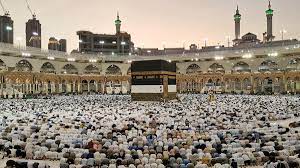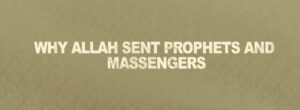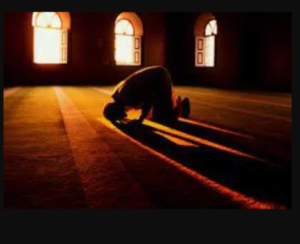
The rules of Hajj and upon whom it is obligatory The four pillars of Hajj and its obligations
Ulama Institute #1
Looking to learn Arabic or memorize the Quran?
Check our Trusted Teachers

- Hajj is an obligation on every Muslim, male or female who can afford the journey. There are certain conditions for Hajj to be obligatory upon the Muslim. All these conditions must be found in a person before Hajj can be compulsory on him/her:
Islam: The person upon whom Hajj is compulsory, must be a Muslim. The non-Muslim is not required to perform Hajj or any other type of worship This is because faith is a condition for deeds being accepted by Allah ﷻ .
Sound Mind The pilgrim must also be of sane mind because there is no responsibility placed upon those who are insane.
Puberty: It is important for the pilgrim to have reached puberty because there is no responsibility placed upon the child until he/she reaches puberty.
The Prophet ﷺ said: “The pen is lifted from three (people): the insane person until he regains his intellect, the sleeping person until he awakens and the child until he reaches the age of puberty.” [Ahmad and Aboo Dawood, and it is Saheeh]
- Although Hajj is not compulsory on a child, his/her Hajj will be accepted. Ability for Hajj to be compulsory the person must also have the ability to do so. This means that he must have transport and provisions available for the trip.
- Therefore, the poor person who has no wealth with him, the person who has no transportation, the person who is not strong enough to walk or the person who has transportation but the route is not safe, does not have to perform the Hajj.
This is because he lacks the ability to perform it. Allah ﷻ has made all forms of worship easy for a Muslim and although the Hajj is obligatory, Allah ﷻ is All-Wise and All-Forgiving. Hajj has four pillars and they are: ihraam, tawaaf, sa’y and the wuqoof at “Arafat. If one of these pillars are left out, the Hajj is invalid.
The first pillar of Hajj is the ihraam, which is the intention to enter into the ritual of Al-Hajj, accompanied by the removal of normal clothing for men and then reciting the talbiyah.
There are certain obligations which are a part of the ihraam. If one of the obligations is left out, the person must sacrifice an animal or fast for ten days. The obligations are as follows:
- Assuming ihraam from the meegaat. This is the place where the Sharee’ah has fixed where ihraam is assumed and it is not permissible to pass it without ihraam for performing Hajj or ‘Umrah.
- Removal of stitched clothing. A pilgrim does not wear a thawb, shirt or hooded robe. He does not wear a turban and he never covers his head with anything. He does not wear leather socks or shoes which cover the entire foot.
The Prophet ﷺ said: “The muhrim (person in ihraam) does not wear a thawb (a long robe-like garment), turbans, pants, hooded robes or leather socks, except for whoever cannot find two sandals, then he wears two leather socks and he should cut them below the ankles [Al-Bukhaari]
This refers to men. There is no specific ruling for women except that they may not wear gloves or tie anything around the face.
The woman does not wear a face veil and she does not wear gloves. - At-Talbiyah: When a person is in ihraam, he starts his ihraam while he is at the Meeqaat and says the following:
Labbayk Allaahumma labbayk. Labbayka laa shareeka laka labbayk.
Innal Hamda Wan-ni’mata laka wal mulk. Laa shareeka lak. “I am here at Your service, O Allah! I am here at Your service. I am here at your service. Verily the praise, and the favor are Yours, and also the sovereignty. You have no partner.”
قال رسول الله ﷺ : ” الطَّوَافَ حَوْلَ البيت مثل الصَّلَاةِ إِلَّا أَنَّكُمْ تَتَكَلَّمُونَ فِيهِ همن تكلم فِيهِ فَلَا يَتَكَلَّمَنُ إلا بخير (رواه الترمذي)
- He should not neglect (saying) it and it is recommended to repeat it, raising the voice with it and say it again at every appropriate occasion (during travel), whether stopping, or setting out, or (before) the start of the prayer, or after completing it or meeting friends.
The Sunan are as follows:
- Performing ghusl for ihraam.
- Wearing ihraam clothes, which is white and clean over the shoulders and attached to the waist.
- Wearing ihraam after an optional Salah.
- Clipping the nails, trimming the moustache and shaving hair under the arms and pubic region before entering into ihraam.
- Repeating the talbiyah and starting it again when a new situation occurs.
It is important for a Muslim to perform all aspects of the Hajj according to the conditions and manner as set out above.
What we learn from the lesson:
- Hajj is an obligation on every Muslim, male or female, who can afford the journey.
- Hajj is compulsory on a person who is Muslim, of sane mind and has reached puberty.
- Hajj is only compulsory on those who have the ability to do so.
- Hajj has 4 pillars. 1st pillar: ihraam
- Obligations of ihraam are: Assuming ihraam from the meegaat Removal of stitched clothing At-Talbiyah







